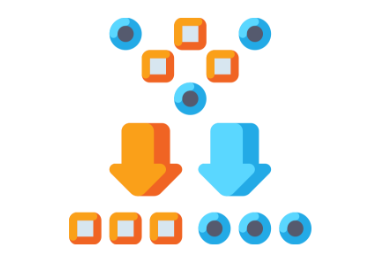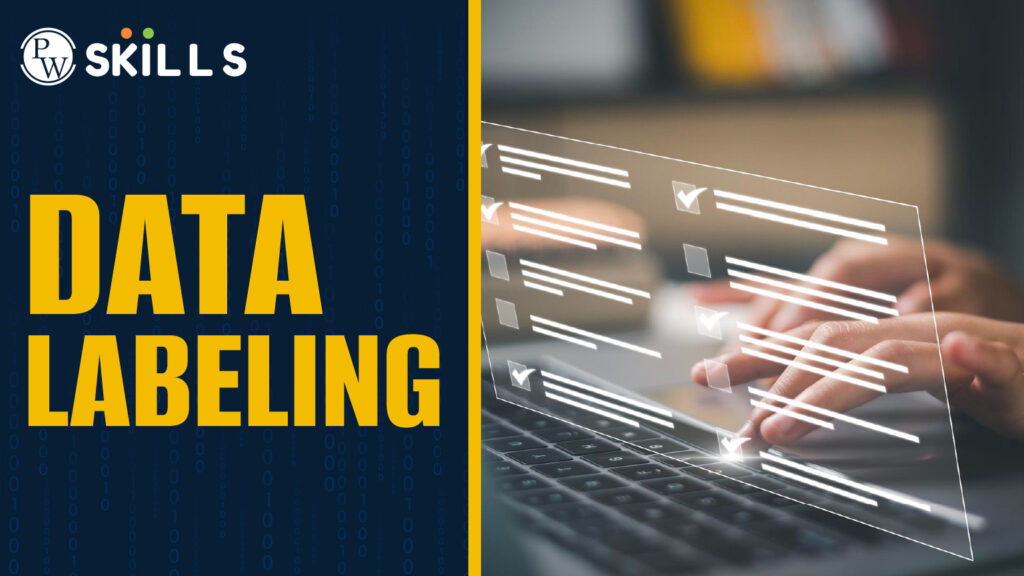There are various major data mining techniques developed and used in data mining projects, including association, classification, clustering, patterns, regression, predictions, etc. Data mining refers to extracting information from a large volume of data.
With advancements in technologies, especially machine learning algorithms, many new data mining techniques are being developed and old traditional methods are being replaced. Data mining is also popular as Knowledge Discovery from Data (KDD). There are many data mining techniques that help to extract information from large datasets in an efficient and optimized manner.
The data mining process is extensively adopted by a large number of companies having large data storage or usage.
Also, Check What are the various uses of Machine learning algorithms?
What is Data Mining?
Data mining is a multi-step process of extracting knowledge from large datasets or databases. The data collected is passed through a series of steps including data preprocessing, data transformation, data mining, pattern evaluation, knowledge representation, knowledge refinement, etc.

Data mining is used to evaluate patterns and uncover hidden trends for businesses. It also helps in fraud detection, marketing, customer behavior patterns, and more. Social media also uses data mining to select the products in trending.
Also, check What is Data Visualization and its uses?
Data Mining Techniques
Data mining uses various techniques and algorithms to convert a large amount of data into an organized format and analyse them for output.
1. Association Rules
The association rule is used to discover relationships between variables based on market analysis in large datasets. It generally connects frequent item sets and generates rules to find connections between them. Common algorithms used with this technique are the Apriori algorithm, the Eclat algorithm, FP-growth, etc.
For example, to determine a company’s performance, association rules will collect various information and determine factors to determine its performance and forecast.
Uses
- Market based analysis
- Recommendation system
- Analyse user navigation patterns on websites.
2. Classification

Classification is a supervised learning technique used to predict and observations based on old data. A large labeled dataset is trained to create a discrete outcome variable. This technique is used to underlying data in a more organised manner.
Some of the common algorithms used in classification are K-Nearest Neighbors, Logistic regression, Decision trees, Support Vector Machines, Naive Bayes, etc.
Uses
- It can be used as a spad detector.
- Used to categorise customers based on their purchasing patterns and behaviour.
- Predicting disease based on the patient data
3. Regression

Regression is a supervised learning technique used to predict continuous numerical value based on the input variables. It is used to establish relationships among variables.
Some of the common algorithms used in these data mining techniques are linear regression, support vector regression, decision trees, random forest, polynomial regression, etc.
Uses
- It can be used in house price prediction
- Sales forecasting based on historical data
- Stock Market analysis
- Future predictions of stock prices
4. Clustering

Clustering is a data mining technique used to find relationships or connections between objects. It is similar to classification where objects are labeled and categorized for further analysis. It is an unsupervised learning technique used to group similar data points together based on their similar features without predefined labels.
Uses
- Group customers with similar behaviours
- Image divisions into meaningful segments.
- Identify anomalies in data.
5. Decision Trees

Decision trees are used to predict an outcome based on a set of given criteria. It comprises root, leaf nodes and internal nodes. It is used for classifications as well as regression tasks. It applies a greedy search using divide and conquer approach. It helps in selecting a specific direction in a vast sea of data.
Uses
- It is used in healthcare to diagnose symptoms based on patient data.
- It is used in finance to calculate credit scoring and loan approval
- It is also used in customer segmentation and targeting
- It is used in quality control and defect detection
- Inventory management and sales forecasting
6. K-Nearest Neighbor (KNN)

KNN is one of the most popular supervised machine learning algorithms. It uses proximity relations to make classifications or predictions. It assumes the similarity between the new data and available data in almost similar categories. It can be used for both classifications as well as regression tasks.
Uses
- It makes predictions based on the closest data points in the future space.
- Image recognition and classifications
- Text classification and medical diagnosis
- Handwriting recognition
7. Predictive Analysis

Predictive analysis is a data mining technique used to leverage historical information to predict future outcomes. It uses statistical modeling, data mining techniques, and machine learning to make predictions. This is helpful for companies as they can identify risks and find patterns in data to uncover upcoming trends and opportunities.
Uses
- Disease outbreak prediction
- Personalized treatment plans
- Disease Progression Forecast
- Personalized treatment plans
- Fraud detection
- Stock Price Prediction
8. Neural Networks

It is a supervised machine-learning algorithm inspired by the human nervous system. The data is processed with the use of nodes and is used to identify the function, binary, bipolar step function with threshold, binary sigmoid function, and bipolar sigmoid function.
Neural networks are used in mining large amounts of data in various sectors. A neural network is used to extract information from large datasets from data warehousing organizations. Some common algorithms used are CNNs, RNNs, GANs, etc.
Uses
- Fraud detection
- Healthcare
- Customer Lifetime Value Prediction (CLV)
- Quality Control
- Image recognition and speech recognition
9. Feature Selection
This data mining technique is used to identify and transform key features found in large datasets. It involves selecting the most appropriate and relevant features and discarding irrelevant features in model making. Common algorithms used in feature selection are recursive feature elimination, PCA, etc.
Uses
- Reducing overiftting
- Improving model performance
- Improve the predictive accuracy of classification algorithms
- Speed up learning algorithms
10. Data Visualization

Data Visualization is a data mining technique is used to represent the formatted data and uncover insights and patterns. It is used in reporting and exploratory data analysis. Some of the common algorithms are matplotlib, seaborn, tableau, Power BI, etc.
Uses
- Convert complex data into visual formats, such as charts, graphs, etc.
- It can help portray significant insights.
How to Choose the Best Data Mining Technique?
Before selecting a data mining technique there are certain factors that must be kept in mind.
- Find your objective: Analyse which data mining technique will best fit your project based on your goal.
- Data type: Check whether the data collected is structured, unstructured, textual, or image-based.
- Size of data: Some algorithms deliver better output with large datasets however, some algorithms are suited only for small to medium datasets.
- Interpretability: Determine the interpretability of the data mining technique you choose. For example, decision trees offer high interpretability which is crucial in certain areas like healthcare.
Recommended Course
- Generative AI Course
- Python DSA Course
- DevOps Course
- UI UX Course
- Digital Marketing Course
- Product Management Course
Learn Data Science with PW Skills
Make an exciting and rewarding career in data science with PW Skills upskilling Data Science with Generative AI Course. This 6 month online training program is specially prepared for beginners as well as working professionals to help them gain real time insights into data science, generative AI, machine learning, and much more.
Get interactive industry-based curriculum, expert mentors, real world capstone projects, certification, and much more in our Data Science learning program only at pwskills.com
large sets of data, analyze them, and identify trends, patterns, and relationships to help businesses make data driven decisions.
Data Mining Techniques FAQs
Q1. What are data mining techniques?
Ans: Data mining process uses various algorithms and techniques to convert large data into a useful bunch of information. Some of the popular data mining techniques are classification, clustering, regression, decision trees, predictive analysis, neural networks, etc.
Q2. What are the top five data mining techniques?
Ans: The major data mining techniques are classification analysis, association rule, anomaly or outlier detection, clustering analysis and regression analysis.
Q3. Why is data mining important?
Ans: Data mining is used to extract useful information, uncover trends, make fraud detection, sales marketing and much more from a large bunch of data organised and analysed using various data mining techniques.
Q4. What are data mining tools?
Ans: Data mining tools are powerful mathematical and statistical tools used in data analysis,cleaning, preprocessing and more. It consists of smart algorithms to handle large sets of data, analyse them and identify trends, patterns and relationships to help businesses make data driven decisions.






